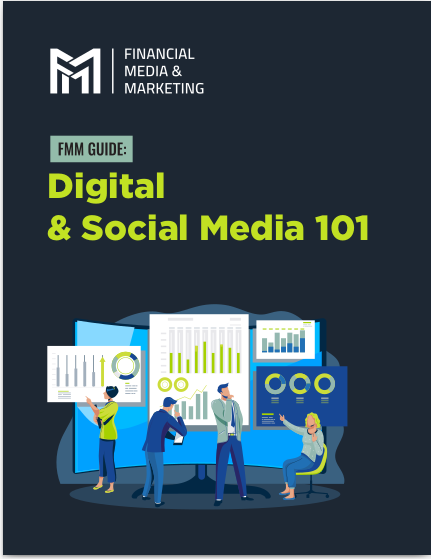Key Takeaways
-
Your online reputation is often the first impression clients and leads will have of you, so it must reflect the professionalism and expertise you bring to the table.
-
Staying proactive in managing your digital presence ensures you maintain trust, credibility, and authority in the competitive financial advisory landscape.
Why Your Online Reputation Matters More Than Ever
As a financial advisor, your clients and leads trust you with their financial future. Before they decide to work with you, however, they’re likely doing some online research. Think about it: how often do you Google someone before meeting them? That’s exactly what your prospective clients are doing too.
In today’s digital world, your online presence is like a handshake—it needs to be firm, confident, and professional. If your digital reputation looks neglected or incomplete, it could send the wrong message about your expertise, credibility, or attention to detail.
This article will guide you on how to create and maintain an online reputation that reflects the high standards you hold as a financial advisor.
Auditing Your Current Online Presence
Before improving your online reputation, you need to understand where you currently stand. A quick audit can help identify areas for improvement.
1. Google Yourself
Type your name and professional title into a search engine. Ask yourself:
-
What comes up first? Is it relevant and professional?
-
Are there outdated or inaccurate results?
-
Do you appear on trusted platforms like LinkedIn or your company website?
2. Review Social Media Accounts
Go through all your social media profiles. As a financial advisor, even personal accounts can reflect on you professionally. Ensure your profiles:
-
Use consistent professional headshots.
-
Include updated contact information.
-
Share relevant, valuable content for your audience.
3. Check Review Platforms
Client reviews can significantly influence prospective leads. Search for reviews on professional platforms and make note of any patterns—positive or negative—that appear.
Tip: Document your findings so you have a starting point for improving your online image.
Building a Professional and Polished Online Image
Once you’ve audited your current presence, it’s time to build a polished and professional image that aligns with your values and expertise.
1. Optimize Your Website
Your website is your digital office. If it looks outdated, hard to navigate, or lacks critical information, it could turn clients away. Ensure your website includes:
-
A clean, professional design.
-
A clear About page explaining your credentials, experience, and approach.
-
Contact details that are easy to find.
-
Educational resources like blogs, videos, or newsletters to position yourself as an authority.
2. Clean Up Your Social Media
Social media can be a double-edged sword. While it allows you to connect with clients and leads, it can harm your image if mismanaged.
-
Professional Profiles: Create professional accounts specifically for your work.
-
Content: Share financial tips, market insights, and updates that reflect your expertise.
-
Tone: Maintain a professional yet approachable tone. Avoid divisive topics that may alienate clients.
3. Leverage LinkedIn to Its Fullest
LinkedIn is a goldmine for financial advisors. Make the most of it by:
-
Completing your profile with a strong headline, summary, and experience section.
-
Posting thought leadership content that showcases your knowledge.
-
Connecting with industry peers, potential leads, and existing clients to expand your network.
Engage Your Audience with Valuable Content
A strong online reputation isn’t just about looking professional—it’s also about providing value. When people see you as someone who consistently shares helpful information, they’ll view you as a trusted authority.
1. Start Blogging
Write blog posts about topics your clients care about. Address common financial questions, trends, or challenges. Examples include:
-
“How to Plan for Retirement in Uncertain Times”
-
“Understanding Market Volatility and Protecting Your Investments”
-
“Tax Planning Tips for High-Income Earners”
Post these blogs on your website and share them across social media.
2. Share Industry Insights
Clients and leads want to know that you stay current on financial trends and regulations. Share:
-
Key news articles (without overwhelming your audience).
-
Short commentary on market shifts or economic updates.
Tip: Always keep content relevant to your audience’s needs and concerns.
3. Create Video Content
Videos are one of the most engaging ways to connect with clients. You don’t need fancy equipment—just focus on sharing clear, valuable advice in bite-sized videos. Consider short explainer videos on topics like:
-
Retirement savings strategies.
-
The impact of inflation on investments.
-
Tax-efficient ways to save for college.
Managing and Responding to Reviews
Reviews are critical for building trust and credibility. Whether they’re positive or negative, how you handle reviews speaks volumes about your professionalism.
1. Encourage Positive Reviews
Satisfied clients often need a nudge to leave reviews. Ask for feedback politely after completing a successful engagement. You could say:
-
“I’m glad you’re happy with the outcome. If you have a moment, I’d appreciate it if you left a quick review.”
2. Respond to All Reviews
Never ignore client feedback. Respond to both positive and negative reviews:
-
Positive: Thank the client for their kind words and express your appreciation.
-
Negative: Stay calm and professional. Acknowledge their concerns, offer to resolve the issue privately, and show a willingness to learn and improve.
3. Monitor Review Platforms
Regularly check Google, LinkedIn, and industry-specific platforms for reviews. Set up notifications where possible to respond quickly.
Consistency is Key: Maintaining Your Reputation Long-Term
Building a strong online reputation isn’t a one-and-done task—it requires ongoing effort. Here’s how to keep things consistent:
1. Update Your Profiles Regularly
Make sure your contact information, credentials, and headshots remain current across all platforms.
2. Create a Content Calendar
Staying consistent with content can be challenging. Develop a monthly calendar that outlines what you plan to post and when. This could include:
-
Weekly blog posts.
-
Biweekly videos.
-
Regular LinkedIn updates.
3. Engage with Your Audience
Don’t just post and walk away. Respond to comments, messages, and questions to show that you’re approachable and invested in your clients’ success.
4. Stay Updated on Industry Trends
Your audience relies on you to provide timely, accurate advice. Stay ahead by:
-
Attending webinars or conferences.
-
Reading financial publications.
-
Sharing new insights with your audience.
Building Trust Through Transparency
In financial advising, trust is everything. Transparency about your process, fees, and values helps reinforce your credibility.
1. Be Clear About Your Services
Make it easy for prospective clients to understand:
-
What services you offer.
-
Your areas of expertise.
-
How you work with clients to achieve results.
2. Communicate Openly and Authentically
Avoid financial jargon that confuses your audience. Speak clearly, honestly, and directly about:
-
How you approach their financial goals.
-
What they can expect when working with you.
Position Yourself as the Financial Advisor People Trust
Your online reputation can either attract or repel potential clients. By staying proactive and intentional, you ensure your digital presence matches the high standards you represent as a financial advisor. Audit your profiles, clean up your digital footprint, and engage with your audience consistently. Over time, you’ll build an online reputation that reinforces your expertise and inspires trust.










